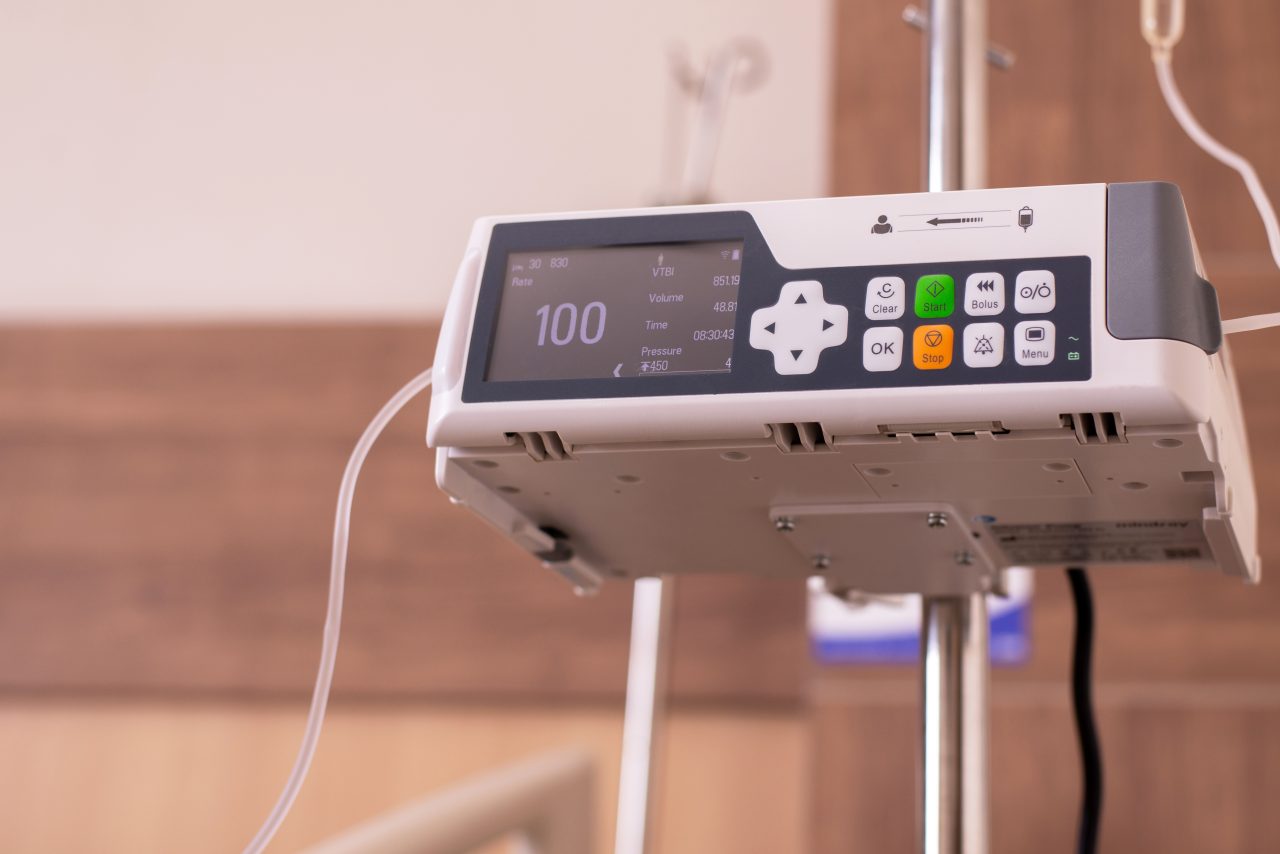An infusion pump is medical equipment that works by producing mechanical pressure in order to move fluids through a tube into the patient’s vascular system, allowing fluids to be administered with more precision. These kits facilitate the parenteral administration of drugs and solutions, and are used especially in situations where precision and a constant contribution of the drug or drug are essential.
For this reason, these teams play a key role within any operating room, especially in the induction and maintenance of total intravenous anesthesia, but also in the administration of necessary medications for the patient while they remain in the operating room.
When is an infusion pump used?
Infusion pumps are used for their ability to administer medications and solutions at high pressures that cannot be achieved with manually operated or gravity-dependent equipment, such as during the administration of intra-arterial drugs, or very rapid flows of solutions during resuscitation. (200-1000 ml / h).
There are many clinical situations where infusion pumps have proven to be much more efficient than traditional drug delivery methods. They are very useful in the application of intravenous inotropes, parenteral and enteral feeding solutions, chemotherapy, epidural analgesics, subcutaneous insulin administration and autotransfusion.
Advantages of infusion pumps
- They allow greater accuracy in the drip rate than gravity systems through a flow regulating clamp.
- They save time for the nursing staff, since with the use of the pumps it is not necessary to regulate the drip flow.
- They allow all types of solutions, blood and its derivatives, drugs and parenteral and enteral infusions to be administered. Adaptable to the needs of the patient, some of them are portable.
How the infusion pumps work
An infusion pump uses pressure to overcome resistance to flow. In general, they allow the programming of the volume to be infused and emit an alarm as soon as this volume is reached, if the drug or substance has not been used up. Many infusion pumps can handle multiple solutions simultaneously and independently. When a pump handles two or more solutions with independent infusion controls, it has two or more channels.
Infusion pumps can be classified according to flow control into volumetric, flowmeter and syringe.
The volumetric equipment is one that controls the liquid to be transfused in volume per unit of time, by means of programming the flow rate, by the operator, except in the case of syringe pumps.
The flowmeter or drop by drop is one in which the flow rate is also controlled by the operator, however, the control of the transfused volume is carried out by counting the drops per unit of time by means of an electronic sensor.
Syringe kits are those in which the volume administered to the patient is stored by means of one or more syringes, and the plunger of the syringe is pushed by a mobile piston controlled by the equipment; the selection of the flow rate is made by the operator and is indicated in volume per unit of time on the equipment.
At Kalstein we are MANUFACTURERS and we have an innovative infusion pump of the highest technology at the best PRICE on the market. That is why we invite you to take a look HERE

